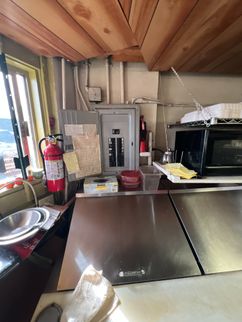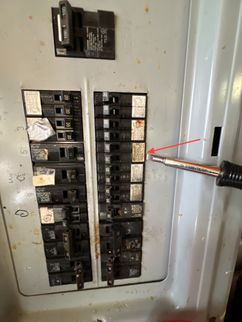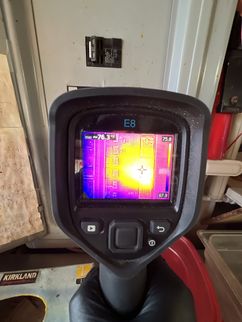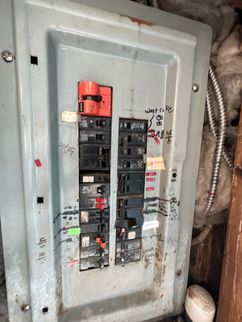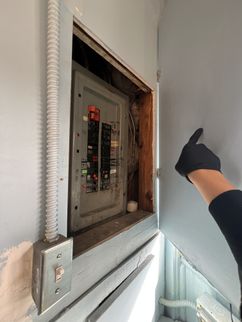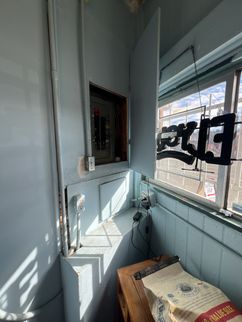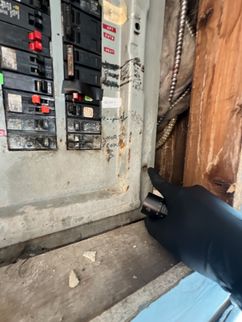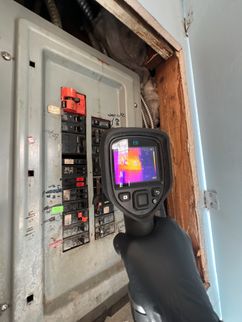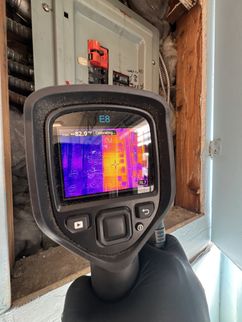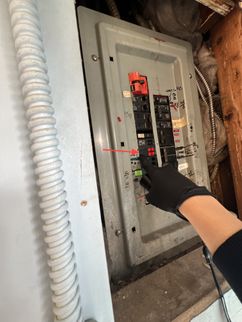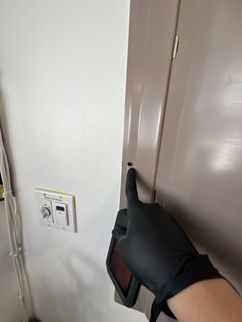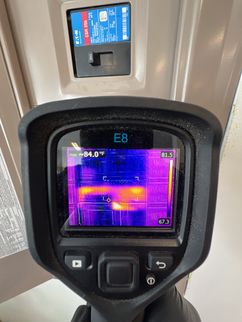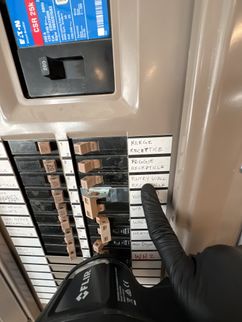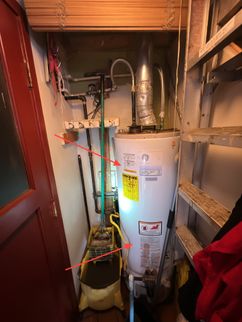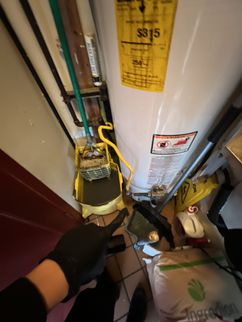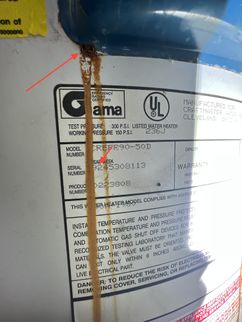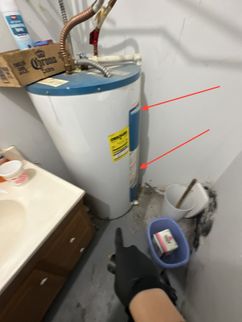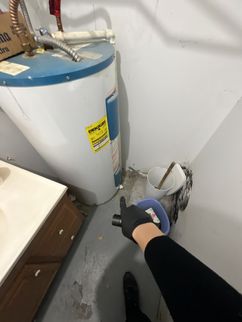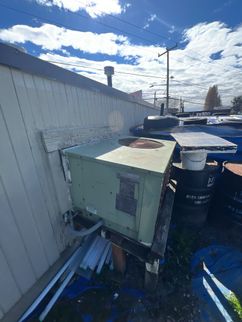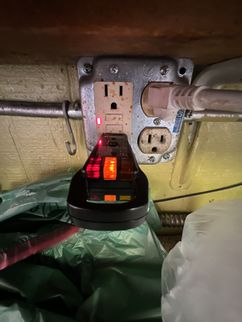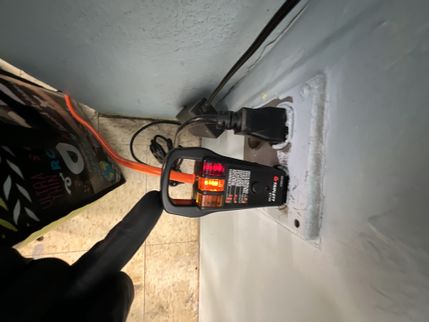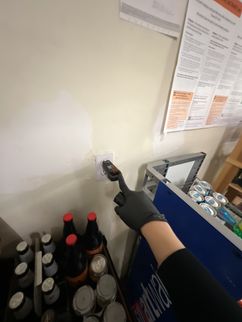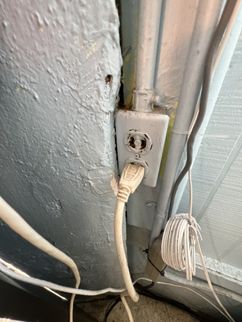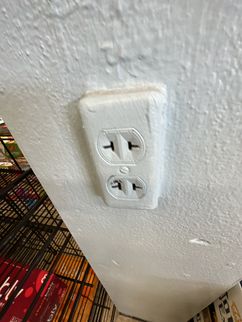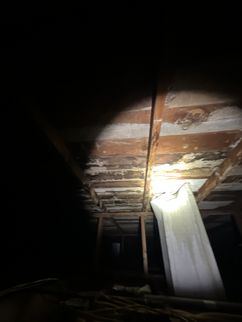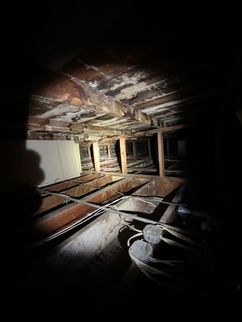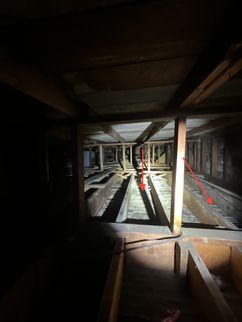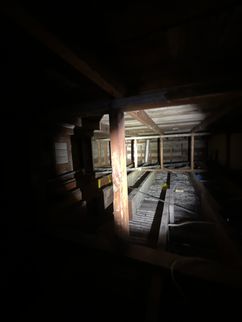The Scope and Purpose of a Building Inspection
Purchasing property involves risk
The purpose of a building inspection is to help reduce the risk associated with the purchase of a structure by providing a professional opinion about the overall condition of the structure. A building inspection is a limited visual inspection and it cannot eliminate this risk. Some buildings present more risks than others. We cannot control this, but we try to help educate you about areas of uncertainty and risk as part of our inspection.
A building inspection is not an insurance policy
This report does not substitute for or serve as a warranty or guarantee of any kind. Warranties can be purchased separately from insuring firms that provide this service.
A building inspection is visual and not destructive
The descriptions and observations in this report are based on a visual inspection of the structure. We inspect the aspects of the structure that can be viewed without dismantling, damaging or disfiguring the structure and without moving furniture and interior furnishings. Areas that are concealed, hidden or inaccessible to view are not covered by this inspection. Some systems cannot be tested during this inspection as testing risks damaging the building. For example, overflow drains on bathtubs are generally not tested because if they were found to be leaking they could damage the finishes below. Our procedures involve non-invasive investigation and non-destructive testing which will limit the scope of the inspection.
This is not an inspection for code compliance
This inspection and report are not intended for city / local code compliance. During the construction process structures are inspected for code compliance by municipal inspectors. Framing is open at this time and conditions can be fully viewed. Framing is not open during inspections of finished homes, and this limits the inspection. All houses fall out of code compliance shortly after they are built, as the codes continually change. National codes are augmented at least every three years for all of the varying disciplines. Municipalities can choose to adopt and phase in sections of the codes on their own timetables. There are generally no requirements to bring older homes into compliance unless substantial renovation is being done.
This is just our opinion
Construction techniques and standards vary. There is no one way to construct a building. The observations in this report are the opinions of the inspector. Other inspectors and contractors are likely to have some differing opinions. You are welcome to seek opinions from other professionals.
The scope of this inspection
This inspection will include the following systems: exterior, roof, structure, drainage, foundation, attic, interior, plumbing, electrical and heating. The evaluation will be based on limited observations that are primarily visual and non-invasive. This inspection and report are not intended to be technically exhaustive.
Your expectations
The overall goal of this inspection is to help ensure that your expectations are appropriate with the building you are proposing to buy, sell or lease. To this end we assist with discovery by showing and documenting observations during the home inspection. This should not be mistaken for a technically exhaustive inspection designed to uncover every defect with a building. Such inspections are available but they are generally cost-prohibitive and time-prohibitive.
Your participation is requested
Your presence is requested during this inspection. A written report will not substitute for all the possible information that can be conveyed verbally by a shared visual observation of the conditions of the property.
How to Read This Report
Getting the Information to You
This report is designed to deliver important and technical information in a way that is easy for anyone to access and understand. If you are in a hurry, you can take a quick look at our "Summary Page” and quickly get critical information for important decision making. However, we strongly recommend that you take the time to read the full Report, which includes digital photographs, captions, diagrams, descriptions, videos and hot links to additional information.
The best way to get the layers of information that are presented in this report is to read your report online (the HTML version), which will allow you to expand your learning about your house. You will notice some words or series of words highlighted in blue and underlined – clicking on these will provide you with a link to additional information. The HTML version of this report also contains streaming videos. Short video clips often contain important information and critical context and sounds that can be difficult to capture in words and still pictures.
For the most reliable viewing experience, I recommend viewing the report on as large a screen as practical, as much detail can be lost on small devices like smart phones. For similar reasons, reports should only be printed in color to retain as much detail as possible and minimize misinterpretation of photographs.
This report can also be printed on paper or to a PDF document.
Chapters and Sections
This report is divided into chapters that parcel the building into logical inspection components. Each chapter is broken into sections that relate to a specific system or component of the home. You can navigate between chapters with the click of a button on the left side margin.
Most sections will contain some descriptive information done in black font. Observation narrative, done in colored boxes, will be included if a system or component is found to be significantly deficient in some way or if we wish to provide helpful additional information about the system or the scope of our inspection. If a system or component of the home was deemed to be in satisfactory or serviceable condition, there may be no narrative observation comments in that section and it may simply say “tested,” or “inspected.”
Observation Labels
All narrative observations are colored, numbered and labeled to help you find, refer to, and understand the severity of the observation. Observation colors and labels used in this report are:
- REPAIR NEEDED:Repair and maintenance items noted during inspection. Please note that some repair items can be expensive to correct such as re-finishing hardwood floors, but are considered simply repair items due to their cosmetic nature.
- IMPROVE/UPGRADE:Observations that are not necessarily defects, but which could be improved for safety, efficiency, or reliability reasons.
- MONITOR CONDITION:Items that should be watched to see if correction may be needed in the future.
- DEFERRED MAINTENANCE:These are repair items that should be considered "routine home ownership items," such as servicing the furnace, cleaning the gutters or changing the air filters in the furnace.
- DESCRIPTION:Detailed description of various aspects of the property noted during the inspection.
- REFER TO SPECIALIST:Observation such as a buried oil tank that may require further investigation to determine the severity and / or urgency of repair.
- NOTES:Refers to aside information and /or any comments elaborating on descriptions of systems in the home or limitations to the home inspection.
Pest Inspection
All items with the bug logo () are part of a structural pest inspection. If your inspector included a structural pest inspection as a part of the scope of your home inspection, you can distinguish pest inspection items by this logo. You can also go to the pest inspection summary page to see a summary of the items that are part of a pest inspection.
Summary Page
The Summary Page is designed as a bulleted overview of all the observations noted during inspection. This helpful overview is not a substitution for reading the entire inspection report. The entire report must be read to get a complete understanding of this inspection report as the Summary Page does not include photographs or photo captions.
Moisture Meter Testing
Where moisture meter testing is indicated in this report a Protimiter Survey Master Dual Function was used.
Summary
Safety/Health
- ED-5 Exteriors and Decks:
No GFCI protection noted at the exterior outlets. GFCI (Ground-fault circuit interrupt) devices may not have been required when this home was built. However, we recommend upgrading with GFCI protection at any receptacles near potential water sources, including; exterior, garage, kitchen and bathrooms and accessory outlets in laundry areas to enhance safety. Upgrades should be performed by a licensed electrician.
- FSD-1 Fuel Storage and Distribution:
Gas line on roof top should be coated yellow or clearly labeled in order to identify and prevent rust. Recommend coating the gas line on roof top to prolong its life.
- RG-6 Roof and Gutters:
Remove construction debris from the roof. This is important to make sure items do not blow off the roof and land on someone below or obstruct drainage and gutters.
- ESNCE-3 Electric Service ( New China Express ):
Inadequate labeling of the main electrical panel circuit breakers was noted during inspection - I can no longer read most of the labels. This should be corrected for improved safety.
- ESCS-3 Electric Service ( Corner Store ):
Inadequate labeling of the main electrical panel circuit breakers was noted during inspection - I can no longer read most of the labels. This should be corrected for improved safety.
Repair Needed
- ED-1 Exteriors and Decks:
Localized siding repairs are needed to the exterior. Hire a licensed general contractor to further evaluate and repair all damaged siding as needed.
- ED-6 Exteriors and Decks:
Missing weatherproof cover noted at the rooftop. Potential shock hazard. We suggest repair/replacement to ensure safety.
- RG-4 Roof and Gutters:
50% of metal coping is loose and not attached properly to the parapet wall on the roof due to missing screws. Recommend reattaching all of the metal coping on roof to prevent high wind from lifting up the metal coping and potentially falling down that can make it unsafe for the pedestrian.
- RG-9 Roof and Gutters:
Loose and disconnected marketing sign noted on roof top. Recommend reattach the sign to prevent it from falling down to the street.
- ESCS-1 Electric Service ( Corner Store ):
An inadequate working clearance was noted for the electric load center. A 30 inch wide and 36 inch deep unobstructed working clearance is recommended for improved safety. Consult with a licensed electrician or general contractor to further evaluate this condition and relocate the panel or improve access as needed.
- HDFWNCE-1 House Distribution and Finish Wiring ( New China Express ):
Hire a licensed electrician to eliminate all open grounds. This is a common condition in older buildings (prior to 1962) where three prong receptacles have been installed on an older two wire system. This creates a safety hazard as it is false advertising; appliances that rely on an equipment ground to discharge a fault can be plugged into ungrounded circuits. This disables the important safety feature of an equipment ground. Proper repair can include:
- Running an equipment grounding conductor or a new three-wire circuit
- Filling the third prong of the receptacle or restoring a two-prong receptacle or
- Installing GFCI protection for this circuit and labeling the open ground receptacles
If GFCI protection is used, the outlets on this circuit should be labeled so it is clear they are protected.
- HDFWCS-1 House Distribution and Finish Wiring ( Corner Store ):
Reverse polarity was noted at some of the electrical receptacle. This is when the hot and the neutral have been wired backwards. This is a safety issue that should be corrected by a licensed electrician.
- HDFWCS-2 House Distribution and Finish Wiring ( Corner Store ):
An inoperative receptacle was noted. This may be on a switched or GFCI protected circuit, but no switch or GFCI was found during inspection. Have the receptacle further evaluated and repaired by a licensed electrician.
Improve/Upgrade
- ED-2 Exteriors and Decks:
Siding was in contact with soil/landscape materials. We suggest four to six inches of clearance be maintained between siding/trim and soil to prevent deterioration of materials.
- FSD-2 Fuel Storage and Distribution:
No sediment trap noted on the gas line near the gas appliances. Sediment traps (drip legs) are installed to collect sediment and prevent it from entering the burners in gas appliances. These devices are required near every automatically controlled gas appliance. Consult with a licensed plumber or heating contractor for installation.
- RG-2 Roof and Gutters:
Metal coping on roof needs to be resealed in a few areas.
- RG-5 Roof and Gutters:
Electrical cable & connection should not be touching or laying flat on the roof surface, this is a safety hazards. Recommend adding a chair and reattach the electrical cable.
- RG-7 Roof and Gutters:
The base for the kitchen exhaust system is not standard. Repair/replace
- ESNCE-1 Electric Service ( New China Express ):
An inadequate working clearance was noted for the electric load center. A 30 inch wide and 36 inch deep unobstructed working clearance is recommended for improved safety. Consult with a licensed electrician or general contractor to further evaluate this condition and relocate the panel or improve access as needed.
- ESCS-2 Electric Service ( Corner Store ):
Given the age and visible condition of this electric panel, updating this service equipment may be needed at some point - this is an old panel, but there are no visible indications that updating is needed at this time.
- ESCS-5 Electric Service ( Corner Store ):
The dead front cover is missing many of the screws needed to adequately secure the cover. Install missing screws as needed for improved safety and please note that screws with sharp ends are not recommended.
- ESCS-6 Electric Service ( Corner Store ):
The top breaker in the electric panel should be be more than 6 feel, 7 inches off the ground. This panel is installed too high. Have this further evaluated and repaired by a licensed electrician.
- ESDBS-2 Electric Service ( Donna's Barber Shop ):
The dead front cover is missing many of the screws needed to adequately secure the cover. Install missing screws as needed for improved safety and please note that screws with sharp ends are not recommended.
- WHNCE-1 Water Heaters ( New China Express ):
The water heater is not secured with earthquake straps. Seismic restraints are required by state code and must consist of two approved 20-gauge sheet metal straps with adjustable connection. One strap must be installed within the upper third of the tank and the other within the lower third of the tank and must be bolted to structural components of the home. We suggest consulting with a licensed contractor for the proper installation of approved seismic restraints.
- WHNCE-2 Water Heaters ( New China Express ):
The water heater is located indoors without an overflow pan and drain line. While an overflow pan may not have been required when the water heater was installed, installation is recommended to collect water and prevent water damage from possible leaks or discharge from the water heater. The pan should be equipped with a drain line to the exterior.
Due to the location of the water heater, it may be difficult or impossible to install a drain line to the exterior. In this situation we recommend sealing the drain opening and installing a water sensor at the pan to alert in the event of water accumulation.
- WHCS-1 Water Heaters ( Corner Store ):
Due to the age of the unit, replacement should be considered in the near future to prevent leaks and possible water damage to interior materials, personal belongings and/or stored items. Additionally, water mark was noted on the water heater tank indicating that it has leaked before.
- WHCS-2 Water Heaters ( Corner Store ):
The water heater is not secured with earthquake straps. Seismic restraints are required by state code and must consist of two approved 20-gauge sheet metal straps with adjustable connection. One strap must be installed within the upper third of the tank and the other within the lower third of the tank and must be bolted to structural components of the home. We suggest consulting with a licensed contractor for the proper installation of approved seismic restraints.
- WHCS-3 Water Heaters ( Corner Store ):
The water heater is located indoors without an overflow pan and drain line. While an overflow pan may not have been required when the water heater was installed, installation is recommended to collect water and prevent water damage from possible leaks or discharge from the water heater. The pan should be equipped with a drain line to the exterior.
Due to the location of the water heater, it may be difficult or impossible to install a drain line to the exterior. In this situation we recommend sealing the drain opening and installing a water sensor at the pan to alert in the event of water accumulation.
- WHDBS-1 Water Heaters ( Donna's Barber Shop ):
The water heater is not secured with earthquake straps. Seismic restraints are required by state code and must consist of two approved 20-gauge sheet metal straps with adjustable connection. One strap must be installed within the upper third of the tank and the other within the lower third of the tank and must be bolted to structural components of the home. We suggest consulting with a licensed contractor for the proper installation of approved seismic restraints.
- HDFWCS-3 House Distribution and Finish Wiring ( Corner Store ):
Recommend changing the 2 prong outlet to a grounded 3 prong outlet for additional protection.
Monitor Condition
- RG-3 Roof and Gutters:
Blistering noted on a few areas of the roof. This is very common for flat roof. Roof blisters typically occur when the roof loses its adhesion. They usually result in raised areas that look like bubbles on the roof's surface. These bubbles can later on be filled with air or water and grow larger in size, especially when they are left untreated. If the blistering grows larger, consult with a qualified contractor to repair as needed.
- ESNCE-2 Electric Service ( New China Express ):
Overheated wiring was noted in the main panel. This often indicates loose connections inside the panel. Monitor and repair as needed.
- ESCS-4 Electric Service ( Corner Store ):
Overheated wiring was noted in the main panel. This often indicates loose connections inside the panel. Monitor and repair as needed.
- ESDBS-1 Electric Service ( Donna's Barber Shop ):
Overheated wiring was noted in the main panel. This often indicates loose connections inside the panel. Monitor and repair as needed.
Deferred Maintenance Items
- G-1 Grounds:
A minimum clearance of 6 feet should be maintained between all trees and the siding and roof structure to prevent damage and/or premature wear of materials and to reduce access by wood destroying insects. Contact a landscape maintenance professional for improvements.
- ED-4 Exteriors and Decks:
Grease noted inside kitchen exhaust system, and some grease noted on the roof surface. Recommend cleaning the kitchen exhaust system regularly to prolong the life of the roof and prevent trip hazards.
- RG-1 Roof and Gutters:
Organic debris (branches, leaves) present on the roof drain and the roof surface. Removal recommended to ensure proper drainage and prevent premature deterioration of the roofing materials.
Conditions
- ED-3 Exteriors and Decks:
No listing visible for the fan unit on roof top. Consult with seller.
- ED-8 Exteriors and Decks:
I could not enter unit D today because it was locked during the inspection. Client is advised to inspect the area.
- HC-2 Heating, Cooling:
Air Conditioning Unit appears to be abandoned. Recommend removing and sealing the siding areas to prevent rodent entry.
Efficiencies
- A-2 Attic:
Whenever you do re-roof, this will be the opportunity to improve roof insulation.
Due Diligences
- ED-7 Exteriors and Decks:
Faulty GFCI: The ground-fault circuit interrupt receptacle (GFCI) installed at the roof top of the structure failed to function properly when tested. This is a safety device designed to shut off power in event of a short circuit or water contact with an electrical device. This device failed to shut off when tested. This is a safety concern, indicating faulty wiring or defective device. Further review and repair by a licensed electrician is recommended to ensure safety and proper function.
The Full Report
General Comments
Building Characteristics, Conditions and Limitations
Attending the Inspection: Inspector Only
Inspector/State License Number: Anh Le #22014482
Type of Structure: Commercial/Retail Structure
Approximate Square Footage: 3200
The approximate square footage listed here is listed as a courtesy and is based off of public records and disclosure. An evaluation of square footage of the buildings and property lines is beyond the scope of this inspection.
Year Built / Age: 1934/88 years
Occupancy: Occupied - Tenant
Animals Present: None
Weather Conditions: Clear
Approximate temperature: 50 degrees
Ground/Soil surface conditions: Dry
Orientation of Report: Facing structure from the street
In 1978, federal laws were past to prohibit use of lead and asbestos in building materials. Manufacturers of building materials were allowed to sell existing stocks of materials that were manufactured with lead and asbestos, so even buildings constructed as late as the mid-1980's could possibly contain lead or asbestos. Identification and testing for lead and asbestos and other environmental testing is beyond the scope of this home inspection. If you wish to seek additional information, I recommend contacting an environmental lab or industrial hygienist.
Unless the wiring in the building has been fully updated, this building likely has wiring that predates the late 1980's. Branch circuit wiring installed in buildings built prior to the late 1980s is typically rated for a maximum temperature of only 60 degrees Celsius. This includes non-metallic sheathed (Romex) wiring, and both BX and AC metal-clad flexible wiring. Knob and tube wiring, typically installed in homes built prior to 1950, may be rated for even lower maximum temperatures. Newer electric fixtures including lighting and fans typically require wiring rated for 90 degrees Celsius. Connecting newer fixtures to older, 60-degree-rated wiring is a potential fire hazard. Repairs for such conditions may involve replacing the last few feet of wiring to newer fixtures with new 90-degree-rated wire, and installing a junction box to join the old and new wiring. It is beyond the scope of this inspection to determine if any such incompatible components are installed. Based on the age of this building, be aware that such components may be present.
Photo Comments: Photos included in this report are representative of conditions and may not show all affected areas or materials noted in the various report sections. If areas, locations or components are not specifically identified, you should assume that conditions noted are present in multiple areas. If we recommended further review, maintenance or repairs, all related/similar areas, locations or components should be assessed by an appropriate and qualified professional. (Example: Separated Caulking - photos may show one or more areas, but all exterior caulk should be checked and repaired to prevent water intrusion and associated deterioration.)
Occupied Dwelling: This property was occupied at the time of the inspection. Inspection of occupied property can present some challenges as furniture, personal belongings, pets, etc., can interfere with our visual inspection of, or access to, areas of the dwelling. We do our best during the inspection to work around items, however, we do not move personal belongings, furniture or appliances. This may limit our inspection.
Grounds
Lot Description
Site Description: Level lot, Level lot above street grade
Grade at Foundation: Adequate
Property Drainage: Appears adequate
Retaining Walls
Retaining Wall Material: Stacked concrete block
Vegetation/Trees
Trees/Vegetation: Vegetation contact with structure
Stairwells/Window Wells
None Noted
Exteriors and Decks
Exterior Stairs and Railings
Exterior Stairs/Railings: Concrete steps
Exterior Stairs: Standard
Siding and Trim
Siding Material: Wood
Trim Material: Wood
Localized siding repairs are needed to the exterior. Hire a licensed general contractor to further evaluate and repair all damaged siding as needed.
Eaves/Soffits
Eave Style: No overhang - typical for the age
Exterior Doors
Exterior Doors: Glass panel doors
Exterior Vent and Exhaust Terminations
Grease noted inside kitchen exhaust system, and some grease noted on the roof surface. Recommend cleaning the kitchen exhaust system regularly to prolong the life of the roof and prevent trip hazards.
Exterior Electrical and Faucets
Exterior Electrical Components: Grounded outlets
No GFCI protection noted at the exterior outlets. GFCI (Ground-fault circuit interrupt) devices may not have been required when this home was built. However, we recommend upgrading with GFCI protection at any receptacles near potential water sources, including; exterior, garage, kitchen and bathrooms and accessory outlets in laundry areas to enhance safety. Upgrades should be performed by a licensed electrician.
Missing weatherproof cover noted at the rooftop. Potential shock hazard. We suggest repair/replacement to ensure safety.
Faulty GFCI: The ground-fault circuit interrupt receptacle (GFCI) installed at the roof top of the structure failed to function properly when tested. This is a safety device designed to shut off power in event of a short circuit or water contact with an electrical device. This device failed to shut off when tested. This is a safety concern, indicating faulty wiring or defective device. Further review and repair by a licensed electrician is recommended to ensure safety and proper function.
Plumbing
Exterior Hose Bibs
Not operating
Water Service
Water Service/Source: Public Water Utility
Main Supply Pipe: Main Supply Line Not Visible
Water Pressure: Unable to test
Distribution Pipe
Supply Pipe Materials: Copper, Plastic
Waste Pipe and Discharge
Waste System: Public Sewer System
Waste and Vent Pipe Materials: Cast Iron
Fuel Storage and Distribution
Gas Meter
Present
Gas Meter Location: Left side of structure
Gas Pipe Materials: Steel and flex pipe
Gas Shut-off Locations: At all gas appliances
Gas line on roof top should be coated yellow or clearly labeled in order to identify and prevent rust. Recommend coating the gas line on roof top to prolong its life.
No sediment trap noted on the gas line near the gas appliances. Sediment traps (drip legs) are installed to collect sediment and prevent it from entering the burners in gas appliances. These devices are required near every automatically controlled gas appliance. Consult with a licensed plumber or heating contractor for installation.
Gas, Propane and Oil Piping
Fuel Supply Materials Noted: Steel Piping and Flex Piping
Roof and Gutters
Roof Materials
Method of Roof Inspection: Mounted, viewed from the surface
Roof Style: Flat
Flashings: Appear intact
Overlay Roof: No
Remove construction debris from the roof. This is important to make sure items do not blow off the roof and land on someone below or obstruct drainage and gutters.
50% of metal coping is loose and not attached properly to the parapet wall on the roof due to missing screws. Recommend reattaching all of the metal coping on roof to prevent high wind from lifting up the metal coping and potentially falling down that can make it unsafe for the pedestrian.
Electrical cable & connection should not be touching or laying flat on the roof surface, this is a safety hazards. Recommend adding a chair and reattach the electrical cable.
Blistering noted on a few areas of the roof. This is very common for flat roof. Roof blisters typically occur when the roof loses its adhesion. They usually result in raised areas that look like bubbles on the roof's surface. These bubbles can later on be filled with air or water and grow larger in size, especially when they are left untreated. If the blistering grows larger, consult with a qualified contractor to repair as needed.
Organic debris (branches, leaves) present on the roof drain and the roof surface. Removal recommended to ensure proper drainage and prevent premature deterioration of the roofing materials.
The roofing materials show normal wear for the age and type. No damaged or missing materials, or excessive deterioration noted at the time of the inspection. Roof appears to be in serviceable condition.
Roof Penetrations
Gutters and Downspouts
Gutter and Downspout Materials: Metal gutters and downspouts
Downspout Discharge: Discharge into underground drains
Electric Service ( New China Express )
Electric Service
Service Entrance: Overhead
Meter Base Amperage: 200
House Electric Service Equipment
Panel Type: Breaker Switches
Panel Manufacturer: Unlabel
Main Electric Panel Location: Kitchen
Main Panel Amperage: Listing not visible
Inadequate labeling of the main electrical panel circuit breakers was noted during inspection - I can no longer read most of the labels. This should be corrected for improved safety.
An inadequate working clearance was noted for the electric load center. A 30 inch wide and 36 inch deep unobstructed working clearance is recommended for improved safety. Consult with a licensed electrician or general contractor to further evaluate this condition and relocate the panel or improve access as needed.
Electrical Grounding System
Present - Could Not Confirm
Electrical Bonding System
Present - Could Not Confirm
Electric Service ( Corner Store )
Electric Service
Service Entrance: Overhead
Meter Base Amperage: 200
House Electric Service Equipment
Panel Type: Breaker Switches
Panel Manufacturer: Not visible
Main Electric Panel Location: Entry
Main Panel Amperage: Listing not visible
Inadequate labeling of the main electrical panel circuit breakers was noted during inspection - I can no longer read most of the labels. This should be corrected for improved safety.
An inadequate working clearance was noted for the electric load center. A 30 inch wide and 36 inch deep unobstructed working clearance is recommended for improved safety. Consult with a licensed electrician or general contractor to further evaluate this condition and relocate the panel or improve access as needed.
Given the age and visible condition of this electric panel, updating this service equipment may be needed at some point - this is an old panel, but there are no visible indications that updating is needed at this time.
The dead front cover is missing many of the screws needed to adequately secure the cover. Install missing screws as needed for improved safety and please note that screws with sharp ends are not recommended.
The top breaker in the electric panel should be be more than 6 feel, 7 inches off the ground. This panel is installed too high. Have this further evaluated and repaired by a licensed electrician.
Electrical Grounding System
Present - Could Not Confirm
Electrical Bonding System
Present - Could Not Confirm
Electric Service ( Donna's Barber Shop )
Electric Service Voltage Tested
Service Voltage: 120/240
Electric Service
Service Entrance: Overhead
Meter Base Amperage: 200
House Electric Service Equipment
Panel Type: Breaker Switches
Panel Manufacturer: Eaton
Main Electric Panel Location: Entry
Main Panel Amperage: 225
The dead front cover is missing many of the screws needed to adequately secure the cover. Install missing screws as needed for improved safety and please note that screws with sharp ends are not recommended.
Electrical Grounding System
Present - Could Not Confirm
Electrical Bonding System
Present - Could Not Confirm
Parking Type/Conditions
Garage General
Parking Type: No Covered Parking
Water Heaters ( New China Express )
Water Heater (1)
Water Heater Type: Tank Style
Energy Source: Natural Gas
Manufacturer: General Electric
Capacity: 50 gal
Manufacture Date/Age: /2010 - 12 years
Pressure Relief Valve: Installed
Seismic Restraints: Not Installed - Required
Expansion Tank: None Noted - Recommended
Drain Pan: Installed, no drain line
Insulating Pad: Not Installed - Recommended
The water heater is not secured with earthquake straps. Seismic restraints are required by state code and must consist of two approved 20-gauge sheet metal straps with adjustable connection. One strap must be installed within the upper third of the tank and the other within the lower third of the tank and must be bolted to structural components of the home. We suggest consulting with a licensed contractor for the proper installation of approved seismic restraints.
The water heater is located indoors without an overflow pan and drain line. While an overflow pan may not have been required when the water heater was installed, installation is recommended to collect water and prevent water damage from possible leaks or discharge from the water heater. The pan should be equipped with a drain line to the exterior.
Due to the location of the water heater, it may be difficult or impossible to install a drain line to the exterior. In this situation we recommend sealing the drain opening and installing a water sensor at the pan to alert in the event of water accumulation.
Water Heaters ( Corner Store )
Water Heater (1)
Water Heater Type: Tank Style
Energy Source: Electric
Manufacturer: U.S. Craftmaster
Capacity: 50 gal
Manufacture Date/Age: Over 20 years
Pressure Relief Valve: Installed
Seismic Restraints: Not Installed
Expansion Tank: None Noted - Recommended
Drain Pan: Not Installed - Recommended
Due to the age of the unit, replacement should be considered in the near future to prevent leaks and possible water damage to interior materials, personal belongings and/or stored items. Additionally, water mark was noted on the water heater tank indicating that it has leaked before.
The water heater is not secured with earthquake straps. Seismic restraints are required by state code and must consist of two approved 20-gauge sheet metal straps with adjustable connection. One strap must be installed within the upper third of the tank and the other within the lower third of the tank and must be bolted to structural components of the home. We suggest consulting with a licensed contractor for the proper installation of approved seismic restraints.
The water heater is located indoors without an overflow pan and drain line. While an overflow pan may not have been required when the water heater was installed, installation is recommended to collect water and prevent water damage from possible leaks or discharge from the water heater. The pan should be equipped with a drain line to the exterior.
Due to the location of the water heater, it may be difficult or impossible to install a drain line to the exterior. In this situation we recommend sealing the drain opening and installing a water sensor at the pan to alert in the event of water accumulation.
Water Heaters ( Donna's Barber Shop )
Water Heater (1)
Water Heater Type: Tank Style
Energy Source: Electric
Manufacturer: Rheem
Capacity: 50 gal
Manufacture Date/Age: /2022 - New
Pressure Relief Valve: Installed
Seismic Restraints: Not visible
Expansion Tank: None Noted - Recommended
The water heater is not secured with earthquake straps. Seismic restraints are required by state code and must consist of two approved 20-gauge sheet metal straps with adjustable connection. One strap must be installed within the upper third of the tank and the other within the lower third of the tank and must be bolted to structural components of the home. We suggest consulting with a licensed contractor for the proper installation of approved seismic restraints.
Heating, Cooling
Heating System
Heating Method: Electric wall heaters
Electric, wall-mounted heaters with blowers and wall-mounted thermostats. The heaters were tested using normal operating controls and functioned properly at the time of the inspection. Typical life expectancy of this style of heater is 10 to 15 years, although units may function beyond that range.
Electric wall heaters should be cleaned at least annually to ensure safety and proper operation. Refer to the manufacturer's website for maintenance information.
Cooling Systems and Heat Pumps
Air Conditioning / Heat Pump: Air Conditioner
Heating and Cooling Distribution Systems
Heat Source in Each Room: Not present
House Distribution and Finish Wiring ( New China Express )
Receptacles and Fixtures
Inspection Method: Random Testing
Electric Receptacles: Grounded 3-wire receptacles
Hire a licensed electrician to eliminate all open grounds. This is a common condition in older buildings (prior to 1962) where three prong receptacles have been installed on an older two wire system. This creates a safety hazard as it is false advertising; appliances that rely on an equipment ground to discharge a fault can be plugged into ungrounded circuits. This disables the important safety feature of an equipment ground. Proper repair can include:
- Running an equipment grounding conductor or a new three-wire circuit
- Filling the third prong of the receptacle or restoring a two-prong receptacle or
- Installing GFCI protection for this circuit and labeling the open ground receptacles
If GFCI protection is used, the outlets on this circuit should be labeled so it is clear they are protected.
House Distribution and Finish Wiring ( Corner Store )
Receptacles and Fixtures
Reverse polarity was noted at some of the electrical receptacle. This is when the hot and the neutral have been wired backwards. This is a safety issue that should be corrected by a licensed electrician.
An inoperative receptacle was noted. This may be on a switched or GFCI protected circuit, but no switch or GFCI was found during inspection. Have the receptacle further evaluated and repaired by a licensed electrician.
House Distribution and Finish Wiring ( Donna's Barber Shop )
Receptacles and Fixtures
Inspection Method: Random Testing
Electric Receptacles: Grounded 3-wire receptacles
Attic
Attic Access
Access/Location: Ceiling Hatch
Method of Inspection: Viewed from access opening
Framing and Sheathing
Roof Framing: Site-built Trusses
Roof Sheathing: Wood plank sheathing
Water stains were noted in some areas of the framing and/or sheathing. These stains were dry at the time of the inspection and appear to be related to previous conditions. No evidence of active or recent leaks noted at the time of the inspection. However, we are unable to verify this condition from a single inspection. We suggest consulting with the seller regarding past conditions and/or verification of repairs. If concerned, consult with a licensed contractor for further review.
Attic Insulation
Insulation Type: None noted
Attic Ventilation
Attic Ventilation Method: Roof Field Vents
Foundation/Substructure
Foundation
Foundation - Perimeter: Raised - Poured concrete
Foundation Configuration: Slab on grade
Evidence of Seismic Protection: None Found - Old House
% of Foundation Not Visible: 70%
.jpg)

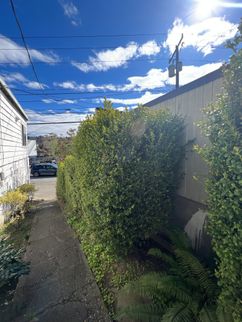
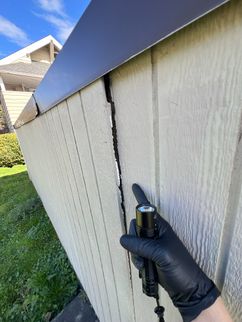
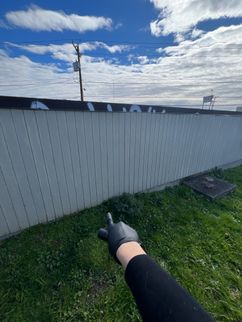
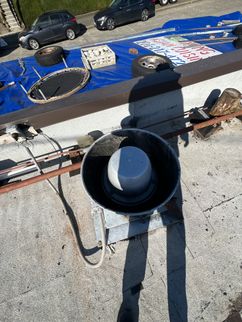
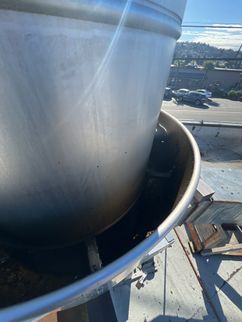
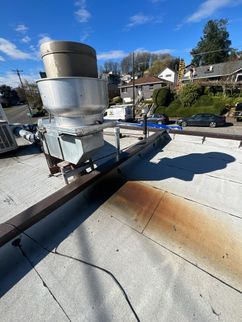
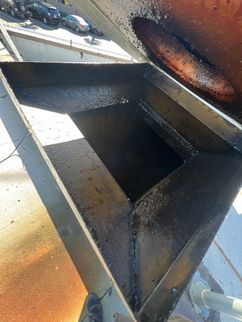

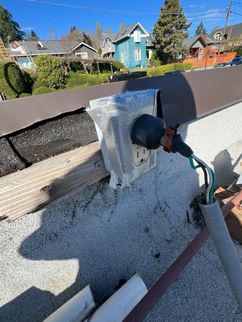
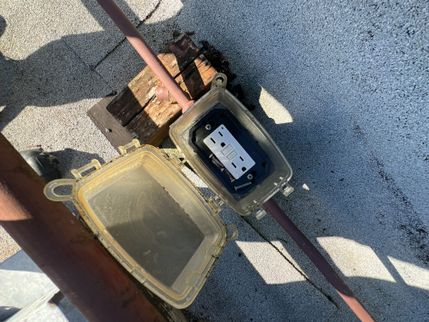
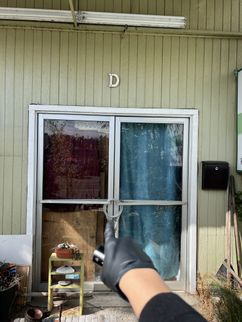
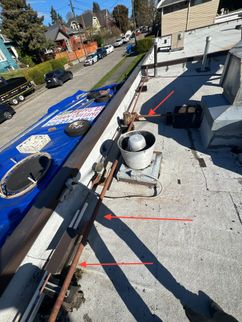
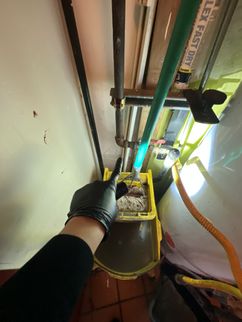
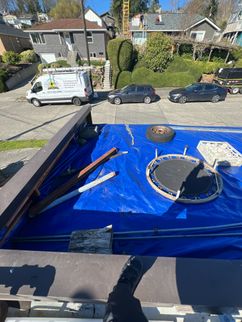
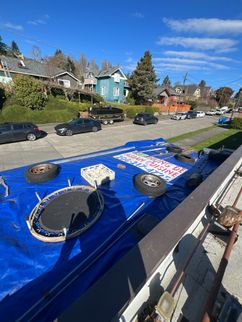


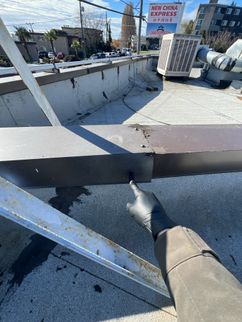
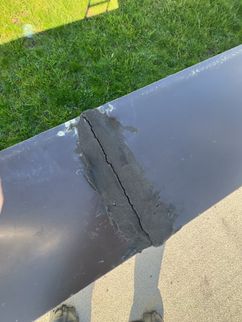
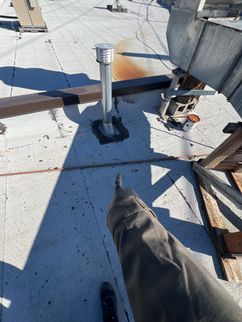
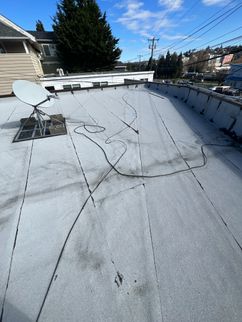
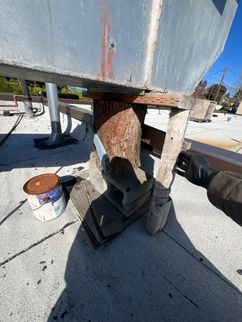
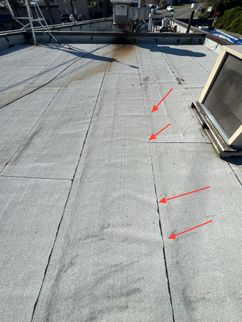
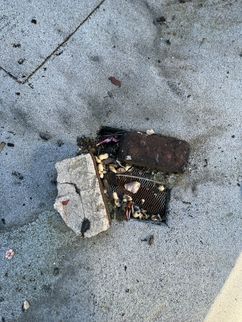
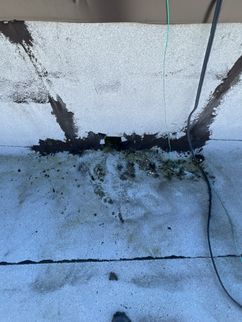
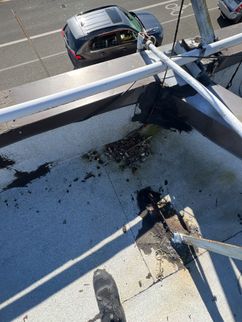
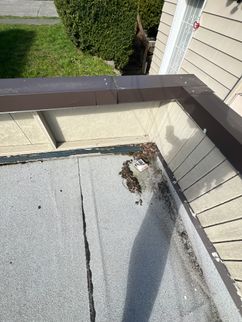

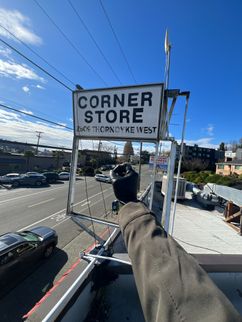
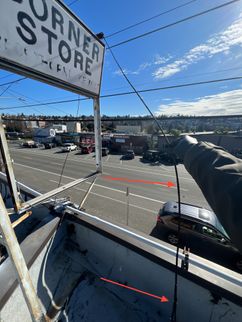
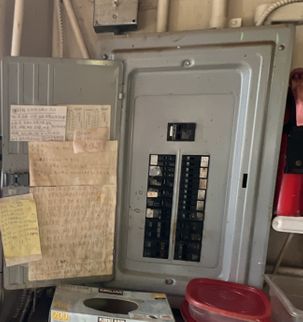
.jpg)
